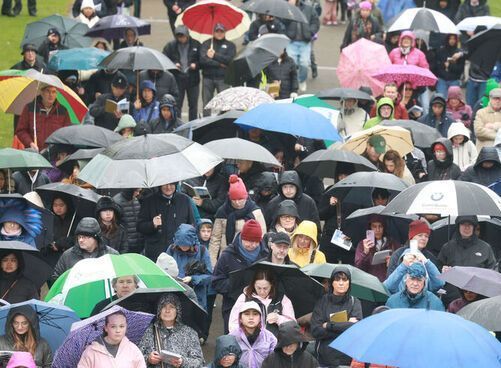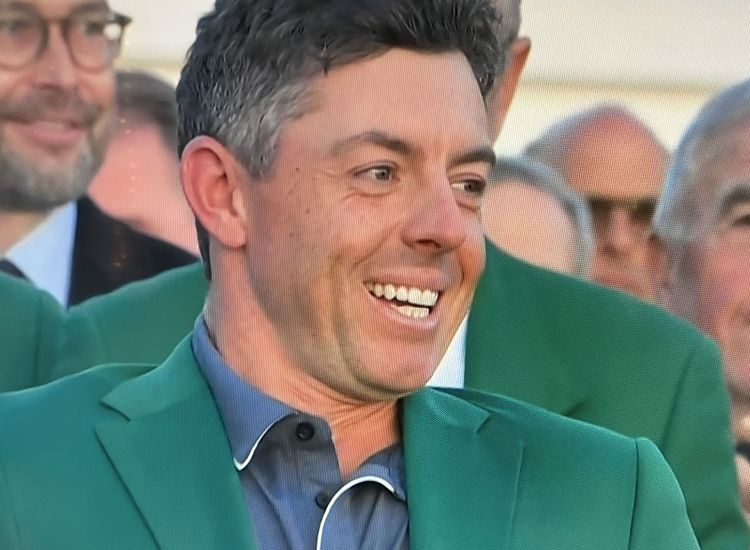Between the Lines / By Peter McDermott
The bodies pile up in “The Wire” as quickly as they do in “The Tudors.” The setting, though, is 21st century Baltimore rather than 16th century England. The series, which some of its fans claim is the greatest TV show ever made, played on HBO for five seasons through 2008.
Seasons Two through Five are each devoted to an aspect of city life: the port, the newspaper business, the school system and politics (Mayor Tommy Carcetti is played by Dublin actor Aidan Gillen), but the focus of Season One remains the unifying theme, the police department’s war against the street heroin trade -- using wiretaps, and hence the title.
Throughout the five seasons, victims and perpetrators are overwhelmingly black. The characters are so well drawn that many of the deaths was shocking for the viewer, particularly if the victim was a foot soldier who had never pulled a trigger. The effect is the same when a rare white victim, a Polish-American stevedore, is killed by foreign-born gangsters.
Though it is indeed a show of rare brilliance, “The Wire” was hardly the first fictional treatment of “black on black” violence. The issue is a staple of popular culture, and is constantly addressed in the media, by journalists, by religious and community leaders, some of whom are nationally known, and by law enforcement officers.
We heard a great deal about the phenomenon from another source in recent weeks. The right-wing commentariat charged in unison that there was only concern on the part of the “liberal media” about the death of Trayvon Martin because he was shot dead by someone who wasn’t black.
This entirely misses why his killing touched a chord, how it became a national issue, and why there was pressure last year to prosecute George Zimmerman. At its heart is freedom of movement and the right to full American citizenship; essentially that people should be able to go about their lives with a cloud of suspicion hanging over them.
I’m late to the game here. I had written something about this for last week’s paper, but I decided to start again because I wanted to examine how perceptions became so divided.
Last year, conservative media outlets decided that Zimmerman was unfairly treated and made him their Captain Dreyfus, which they were perfectly entitled to, of course. However, they pursued the cause with such relentlessness that at the end of it all it seemed a reasonable compromise to say that this was a “tragedy that happened because two people had made bad choices.”
The fact is that we still don’t know what choices were made by Trayvon Martin, who turned 17 two weeks before his death, but we do know that the 28-year-old Zimmerman turned the neighborhood watch ethos upside down in several respects that night. The nearest equivalent might be a guy who pours himself a stiff drink at an AA meeting.
I confess that I didn’t read or hear very much about the case before the verdict of Saturday, July 13. I was drawn in after the fact partly by the broader controversy, but was also intrigued by the different interpretations of what happened, which is the essence of any crime mystery. In that regard, the four-minute Zimmerman conversation with the dispatcher raised a huge red flag for me. The thing that I noticed hasn’t been part of the debate, but from that point (my Lt. Colombo moment, you could say) I was strongly inclined towards the view the view that Zimmerman’s intent had not been good. Three other issues that bothered me -- again not widely discussed, if at all -- reinforced that view. However, BTL is a media column, and my observations aren’t central to the argument being made, so I won’t waste space revealing them. They mightn’t quite pass the Sherlock Holmes test, in any event.
There’s plenty more evidence out front and center to argue over. On July 12, the day before the verdict, Boston Stangler Albert DeSalvo’s body was exhumed. It was a reminder that it takes some degree of premeditation to kill someone with your bare hands. So you would think that a kid who is a middleweight in boxing terms might be best served attacking an adult heavyweight from behind. But instead, we are told, he punched him in the face.
The boy certainly gave him what my grandmother back in Dublin would’ve have called a “fourpenny one.” But there’s little evidence of a real follow up. No black eyes; no streaming blood from his nose; the injury to the back of his head is hardly life-threatening; and tellingly, there are no pictures hours later of a head swelled up from a serious beating.
In the police car, the slightly bloodied 28-year-old Zimmerman exhibited a sort of sheepish “you shouda seen da other guy” look. Except, of course, the other guy was 17, unarmed, more than 40 pounds lighter, and dead.
One of the more interesting pieces about this whole controversy is a podcast interview on the website of the Jesuits’ American Magazine with Professor Mark Naison of Fordham.
“There is a body language that is appropriate in that situation – between the person in authority and the young person,” Naison said. “You have to be polite, you have to give them respect, you have to look them in the eye.
“Anyone who deals with teenagers knows you don’t back them into a corner, because they won’t back down,” he added.
Naison, who is white, told how back in Brooklyn in the 1970s he was selected as a block captain because he was a big guy who’d grown up in a tough neighborhood. He had to face down youths, both white and black, who robbed cars and broke into houses, and he also later worked as a bouncer.
“I dealt with kids a lot tougher than Trayvon Martin and I never had a gun,” he said.
Trayvon Martin had no juvenile record and had never been arrested. His killer, on the other hand, was arrested in 2005 for assaulting a police officer. Trayvon was suspended from school on three occasions and we just don’t know how his story was going to turn out. One might speculate that his episodes of delinquency would eventually have lead to an arrest, or one might as easily say that there was a good chance his father could have straightened him out and eventually sent him off to college like his older brother.
It’s hard not to feel that the marks against Trayvon were greatly magnified by his blackness. Could an Irish or Italian or Russian kid who was a little wild, and maybe hanging with the wrong crowd, be put on trial after his death? Could a white kid who was 5’ 11” and 158 pounds (which is what Trayvon was according to the autopsy) be made seem a threat to the life and limb of a burly adult? Would the same evidence of macho posturing and mugging for the camera and tough talk be hunted down by right-wing media outlets?
Let’s imagine a notorious case in which race is not involved. Let’s instead make the shooter a sports or entertainment celebrity of some sort. A celebrity, with all the same bizarre Zimmerman moves that night, simply wouldn’t make the grade as victim against a white kid on Fox News. The attitude more likely would be: “We always knew, talented though he is, Georgie was a little creepy and a little crazy.”
Then there’s the issue of the hoodie raised initially by Geraldo Rivera – who, it might be pointed out, dresses like a multiple cop-killer and bank robber, if that cop killer and bank robber is John Dillinger (and nothing but quality either for Whitey Bulger). One impression I had when I saw the pathetically sad sight of Trayvon Martin’s body was that his clothes looked like they were bought from an L.L. Bean catalog. I emailed a former Echo colleague, an expert on such things, who responded: “Feedback from younger folks is that he was not a ‘thug’ based on his appearance. Pants are up to waist, fleece shirt (not sure if it's L.L. Bean) is not thug looking but more of a conservative look.”
The drug issue, too, shows that there isn’t a great deal of margin of error for black youth. Most experts seem to feel that marijuana would not make someone any more aggressive in that situation. The drug is everywhere in our society, lots of upper middle-class kids smoke it and even Sean Hannity thinks it should be decriminalized. But in this instance, the traces of marijuana found in Martin’s blood became central to the story. (The killer was not required to do a toxicology test.) When President Obama made his comment about Trayvon being him 35 years ago, Hannity’s response was an ungracious and gratuitous drug reference.
Right-wing media has become skilled at pushing every race button possible while still managing to remain technically post-racial. It has aided the creation of a Republican Party that is overwhelmingly white in its support bases. It didn’t help, as the Irish-American journalist Joan Walsh has convincingly argued, that while the GOP devised its “Southern Strategy” and Northern equivalents, the Democrats forgot how to appeal to the white working-class.
Now, the party of Lincoln has a much bigger problem. It’s seen as disliking and lacking empathy for anybody that’s different from an American mainstream of the past – hence, for instance, its difficulty winning over Asian, Jewish and Hispanic voters. That lack of empathy was arguably on display in the blindness to the pain and sense of dread that the lifeless body of Trayvon Martin caused in middle-class and upwardly mobile African-American parents.









